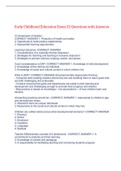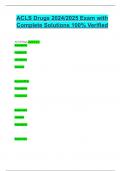Summary
Summary PSY4761: Personality disorders. Taak 6: Antisocial PD and psychopathy
- Course
- Institution
PSY4761: Personality disorders. Extensive elaboration of the learning objectives associated with task 6: Antisocial PD and psychopathy. Includes citations and notes from the tutorial in orange. For all tasks, see the bundle.
[Show more]












